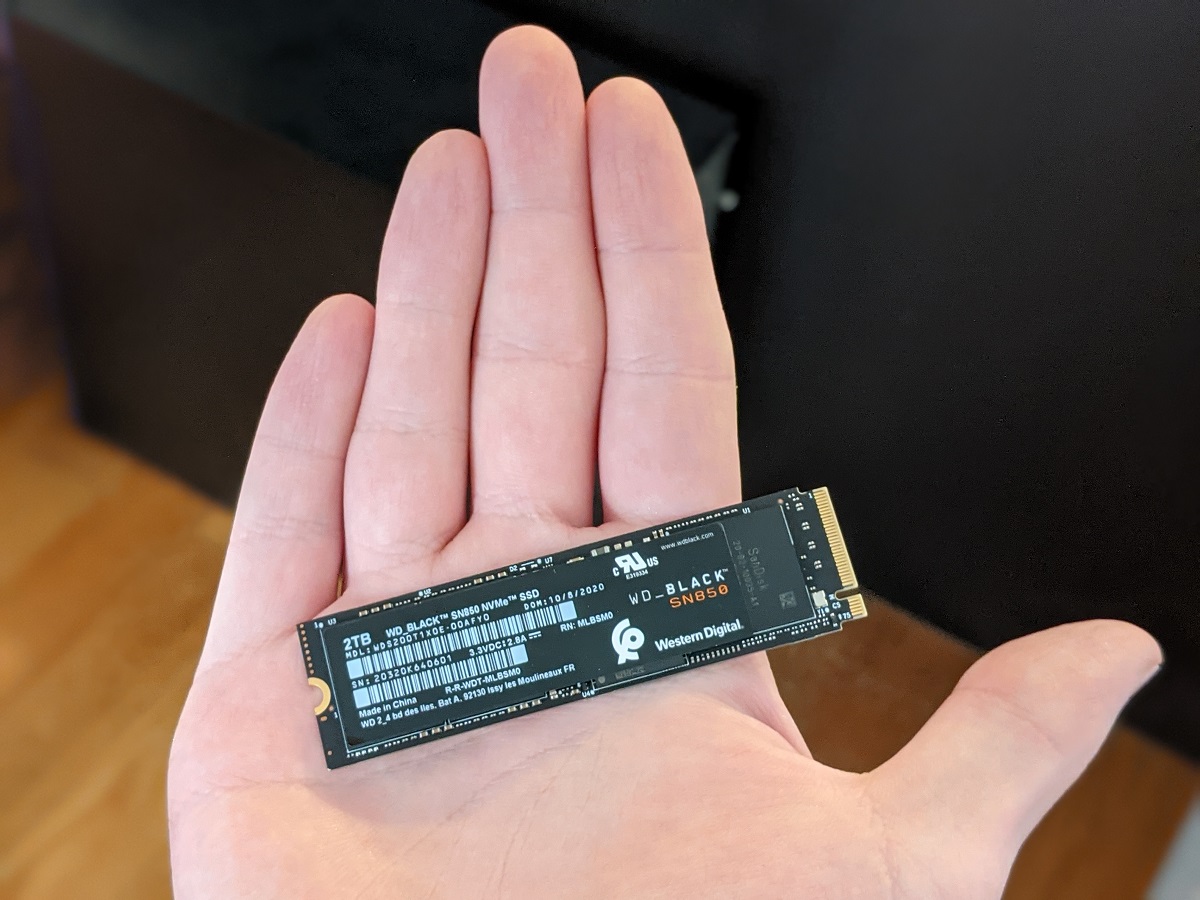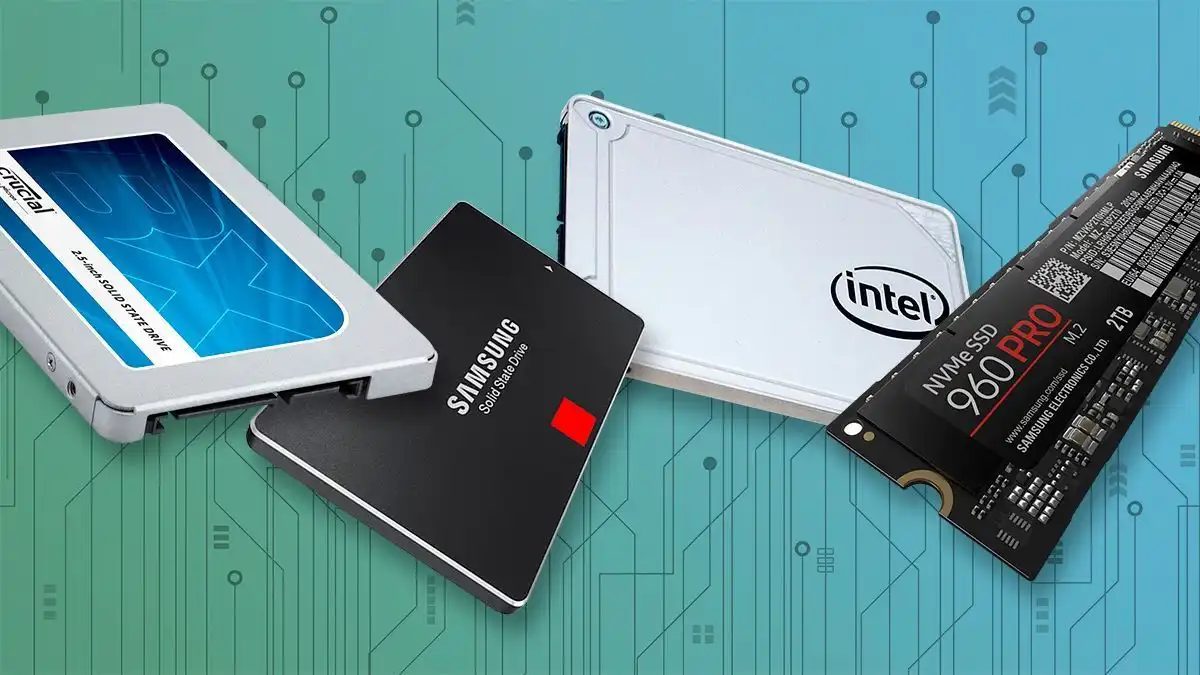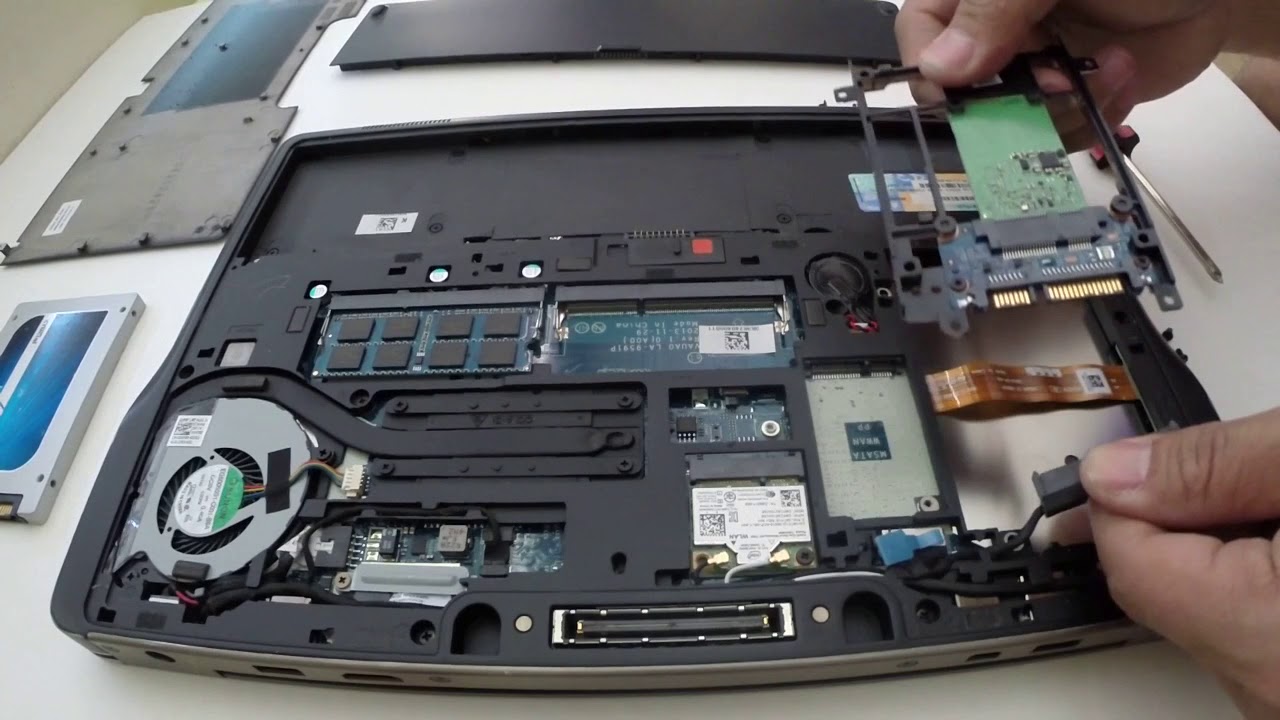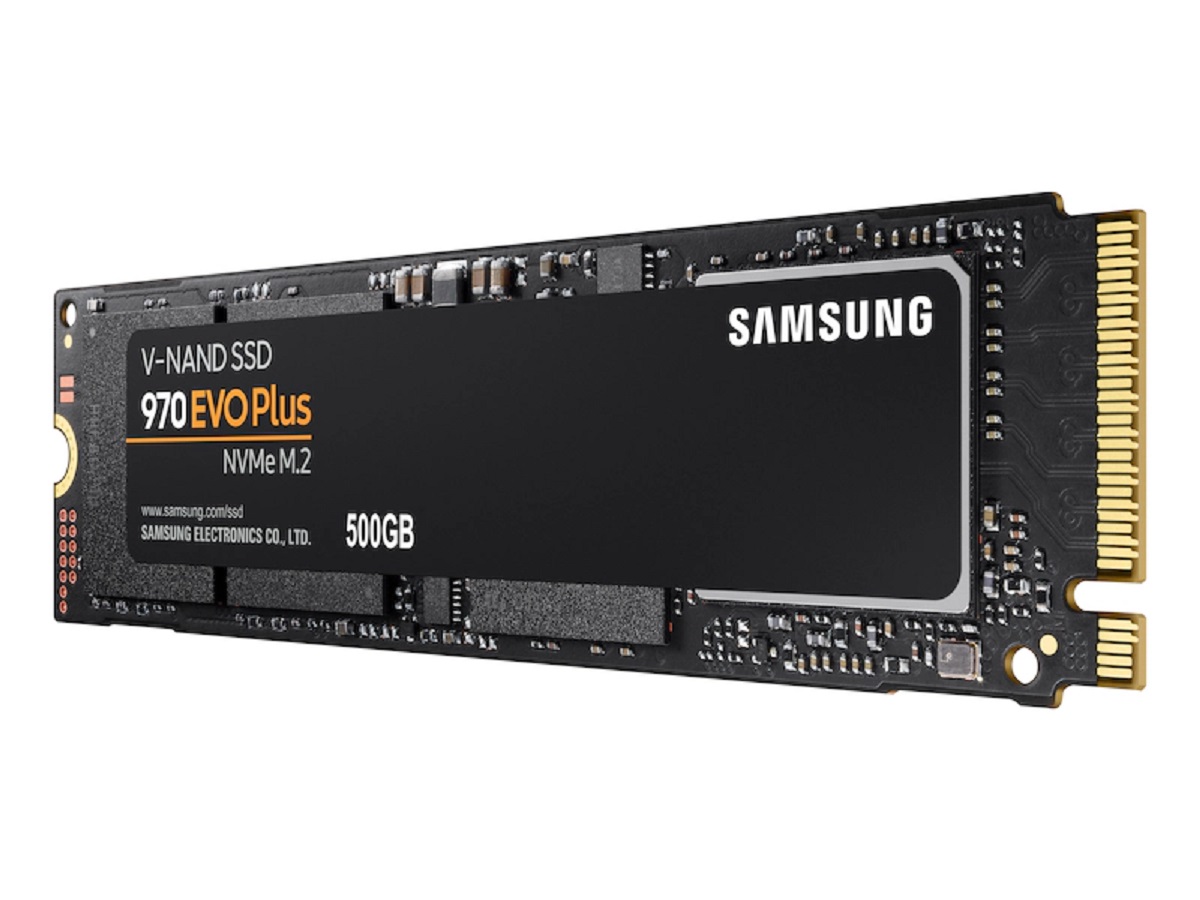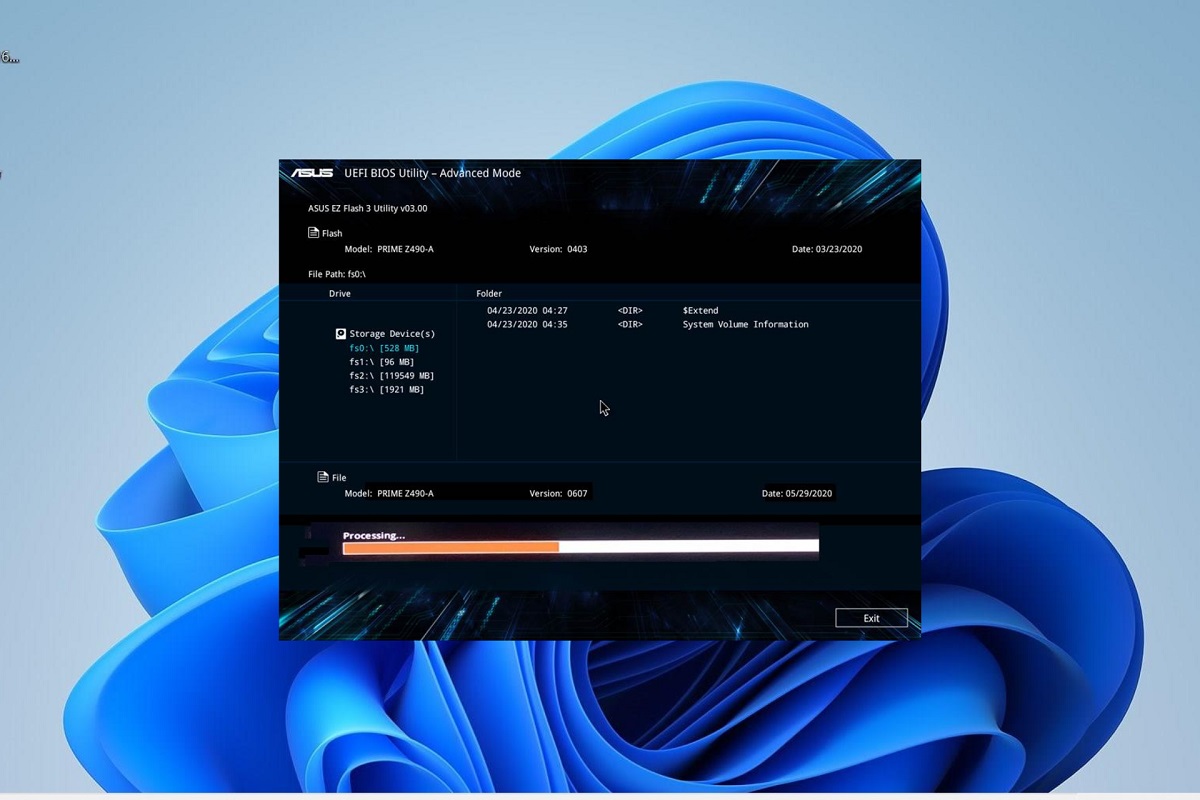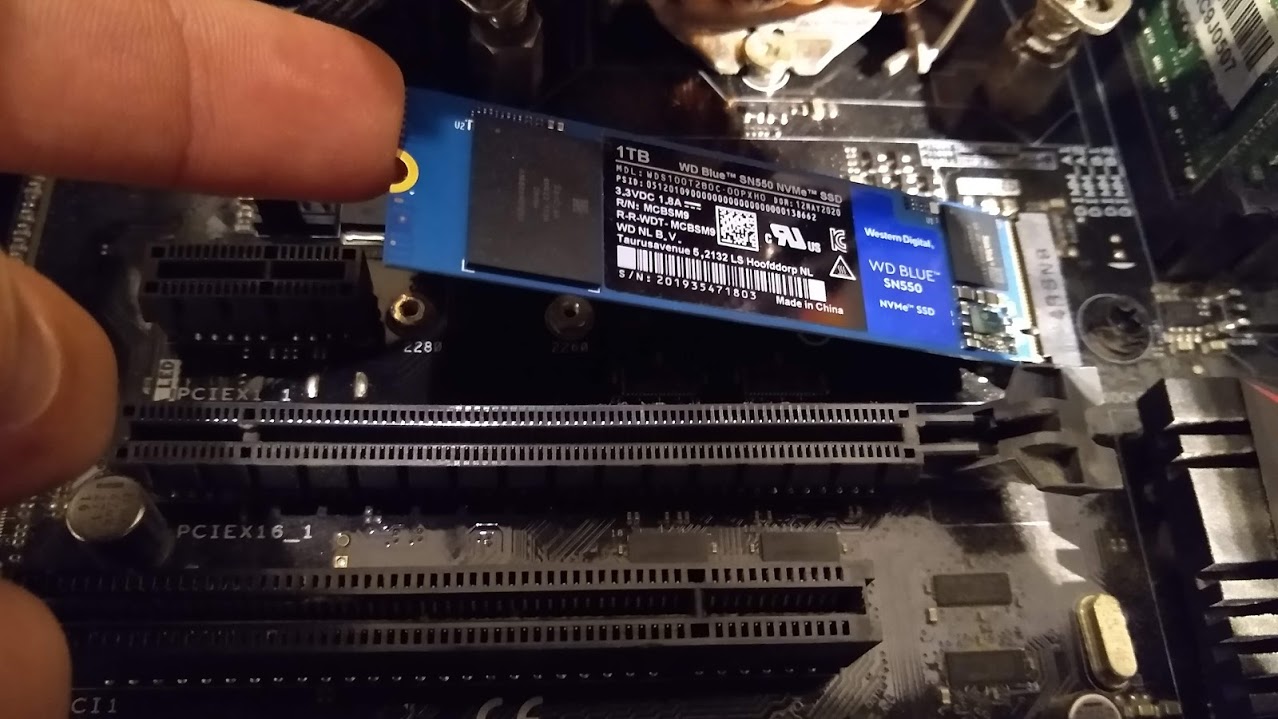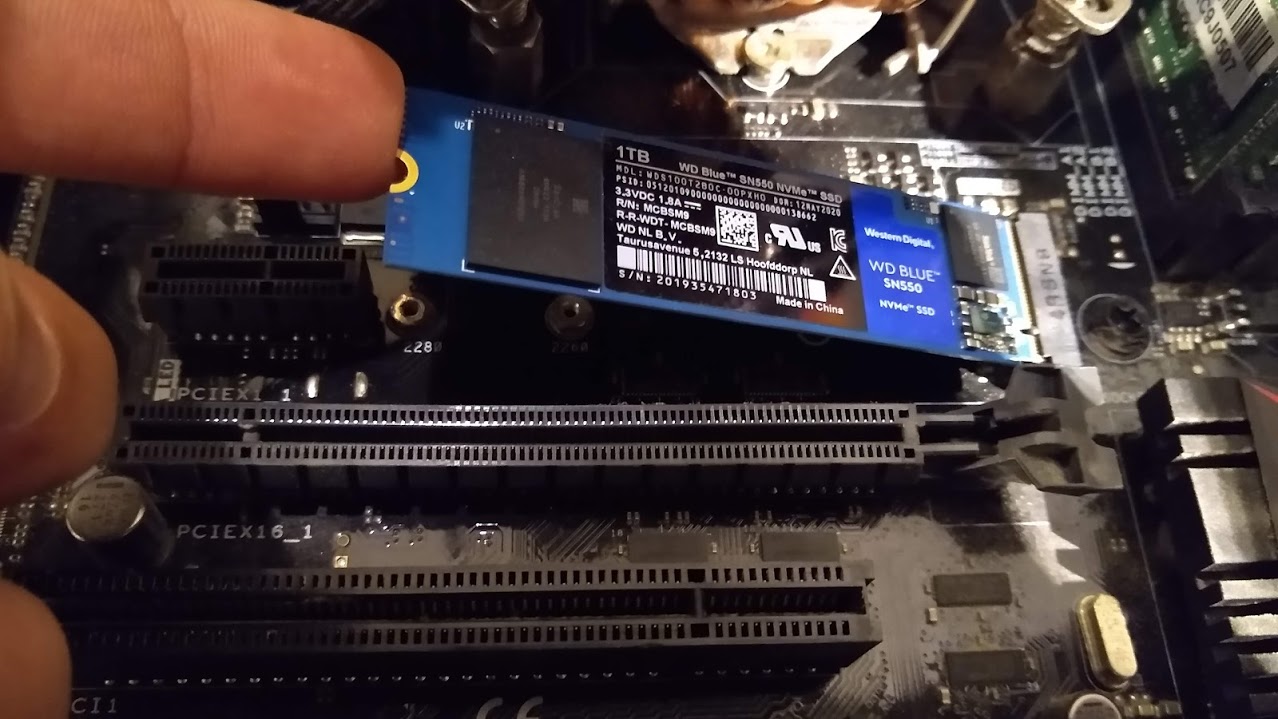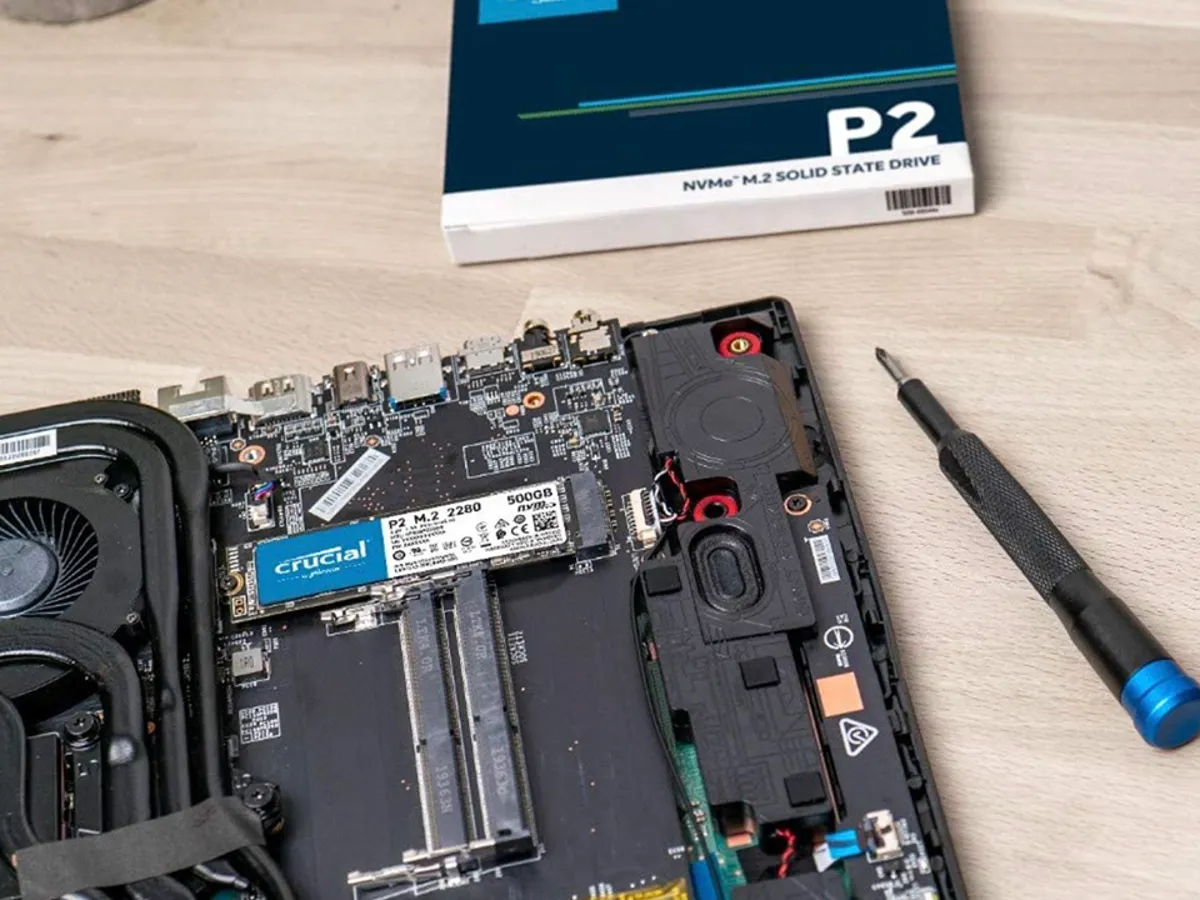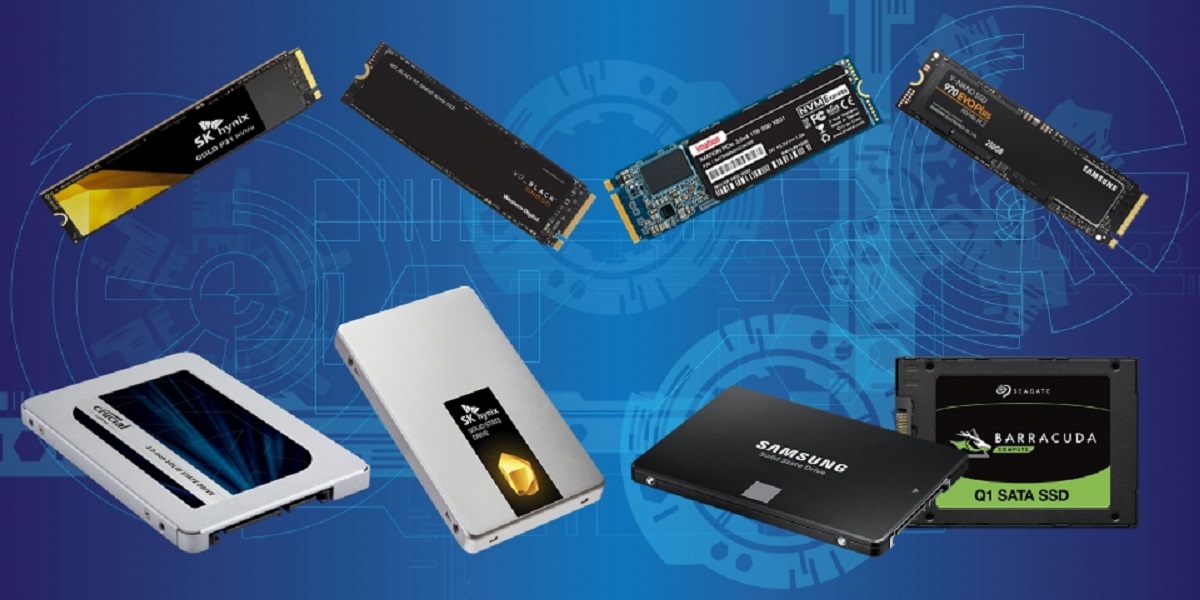Introduction
Welcome to this guide on how to format a new SSD M.2 drive. If you’ve recently acquired a new SSD M.2 drive for your computer, it’s important to format it correctly before using it. Formatting allows you to prepare the drive for data storage and ensures compatibility with your operating system.
Before we dive into the step-by-step guide, let’s take a moment to understand what an SSD M.2 drive is and why formatting is necessary.
An SSD M.2 drive, also known as a solid-state drive, is a compact and high-performance storage device commonly used in modern laptops and desktop computers. It utilizes NAND flash memory chips to store data, resulting in faster read and write speeds compared to traditional mechanical hard drives.
Formatting a new SSD M.2 drive is essential for several reasons. Firstly, it enables you to create a file system on the drive, such as NTFS or exFAT, which allows the operating system to manage and organize the data stored on the drive. Additionally, formatting ensures that any existing data on the drive is erased, eliminating any potential conflicts or compatibility issues.
When formatting a new SSD M.2 drive, there are a few important factors to consider. It’s crucial to choose the appropriate file system based on your operating system requirements and personal preferences. Additionally, you may need to decide whether to perform a quick format or a full format, depending on your specific needs and time constraints.
In the following sections, we will provide a detailed step-by-step guide on how to format a new SSD M.2 drive. Whether you’re a novice or an experienced computer user, this guide will help you navigate through the process with ease. Let’s get started!
What is an SSD M.2?
An SSD M.2, also known as a solid-state drive M.2, is a high-performance storage device that has gained popularity in recent years. It is designed to be smaller and more efficient than traditional hard drives, making it ideal for modern laptops and desktop computers.
The term “M.2” refers to the form factor of the SSD, which is a specification that defines the physical dimensions and connectors of the drive. M.2 drives are typically slim and compact, resembling a small circuit board. They connect directly to the motherboard of a computer via an M.2 slot, negating the need for cables or additional power connectors.
One of the key advantages of an SSD M.2 drive is its speed. Unlike traditional hard drives that rely on spinning disks and mechanical arms to read and write data, SSDs use NAND flash memory chips. This results in much faster access times, allowing for quicker boot times, application launches, and file transfers.
Another significant benefit of SSD M.2 drives is their durability. Since they have no moving parts, they are less susceptible to mechanical failures caused by shocks, vibrations, or accidental drops. SSDs are also less prone to data corruption and can withstand extreme temperature conditions.
SSD M.2 drives come in various capacities, ranging from 128GB to several terabytes. They offer ample space to store operating systems, applications, files, and multimedia content. Additionally, SSDs are available in different speed variants, typically labeled as SATA III or NVMe. NVMe (Non-Volatile Memory Express) SSDs provide even faster data transfer speeds, making them ideal for demanding tasks such as video editing or gaming.
Overall, SSD M.2 drives have revolutionized the storage industry by offering a compelling alternative to traditional hard drives. With their small form factor, high-speed performance, and exceptional durability, they have become a popular choice for those seeking a significant boost in their computer’s performance.
Why format a new SSD M.2?
Formatting a new SSD M.2 drive is an essential step before using it in your computer system. While the drive may come pre-formatted from the manufacturer, there are several reasons why you should format it yourself.
Firstly, formatting allows you to create a file system on the SSD M.2 drive. A file system is a structure that the operating system uses to manage and organize data on the drive. It determines how files are stored, accessed, and secured. By formatting the drive, you can choose the appropriate file system for your needs, such as NTFS, exFAT, or FAT32.
Each file system has its own advantages and limitations. For example, NTFS supports larger file sizes and offers enhanced security features, making it ideal for Windows operating systems. On the other hand, exFAT is a more universal file system that allows for seamless compatibility between different operating systems, such as Windows and macOS. By formatting the drive yourself, you can select the file system that suits your specific requirements.
Secondly, formatting a new SSD M.2 drive ensures all data on the drive is erased. While the drive may be new, it is possible that it contains residual data or test files from the manufacturing process. By formatting the drive, you can guarantee a clean slate, eliminating any potential conflicts or compatibility issues that might arise if leftover data were to interfere with your system.
Formatting also enables you to optimize the SSD M.2 drive for better performance. Some operating systems, such as Windows 10, offer the option to perform a quick format or a full format. A quick format erases the file system and initializes the drive, while a full format checks the entire drive for errors and bad sectors.
In some cases, performing a full format can help identify and recover any problematic sectors, ensuring optimal performance of the SSD.
Additionally, formatting a new SSD M.2 drive gives you the opportunity to assign a unique drive letter to the device. This allows for better organization and easy identification of the drive in your file explorer or operating system.
By taking the time to format your new SSD M.2 drive, you can ensure compatibility, optimize performance, and start with a clean slate. It’s a crucial step that sets the foundation for a smooth and efficient user experience, allowing you to make the most of your high-performance storage device.
Things to Consider Before Formatting
Before you proceed with formatting your new SSD M.2 drive, there are a few important factors to consider. These considerations will help ensure a successful formatting process and optimize the performance of your drive:
1. Backup Your Data: Before starting the formatting process, it is crucial to backup any important data stored on the drive. Formatting will erase all data on the drive, so you must make sure to create a backup to avoid permanent data loss.
2. Check for Compatibility: Ensure that your computer’s motherboard supports the M.2 form factor and has an available M.2 slot. Additionally, verify if your computer’s BIOS is updated to the latest version to ensure compatibility with the SSD M.2 drive.
3. Choose the Right File System: Selecting the appropriate file system is critical. Consider the operating system(s) you will be using and their compatibility with different file systems. For example, Windows systems typically work best with NTFS, while exFAT offers more cross-platform compatibility.
4. Quick Format vs. Full Format: Decide whether you want to perform a quick format or a full format. A quick format is faster and suitable for most situations. However, if you suspect any issues with the drive or want to recover bad sectors, a full format may be necessary.
5. Research Additional Settings: Depending on your specific requirements, you might need to adjust certain settings during the formatting process. For example, you might want to enable disk compression or specify allocation unit size. Research these additional settings to optimize your drive’s performance.
6. Prepare Installation Media: If you plan to install an operating system on the SSD M.2 drive after formatting, make sure you have the necessary installation media, such as a bootable USB drive or DVD, and the corresponding license key.
7. Seek Professional Assistance (If Needed): If you are unsure about any aspect of the formatting process, it is always best to seek professional assistance. You can consult with a computer technician or refer to the manufacturer’s documentation for guidance.
By considering these factors, you can ensure a smooth formatting process and optimize the performance of your new SSD M.2 drive. Taking the time to prepare and make informed decisions will contribute to a seamless experience with your newly formatted drive.
Step-by-step Guide on How to Format a New SSD M.2
Formatting a new SSD M.2 drive is a straightforward process that can be done using the built-in tools provided by your operating system. Follow these step-by-step instructions to successfully format your new SSD M.2 drive:
Step 1: Backup Your Data: Before proceeding with the formatting process, ensure that you have backed up any important data on the drive. This step is crucial as formatting will erase all data on the drive.
Step 2: Prepare the Drive: Connect the SSD M.2 drive to your computer’s M.2 slot. Make sure the drive is securely seated in the slot. If your computer has multiple M.2 slots, refer to your motherboard’s documentation to determine which one to use.
Step 3: Access Disk Management: Open Disk Management on your computer. In Windows, you can do this by right-clicking the Start Menu, selecting “Disk Management” from the menu, or by searching for “Disk Management” in the search bar.
Step 4: Locate the SSD M.2 Drive: In the Disk Management window, you will see a list of all connected drives. Locate your SSD M.2 drive, and ensure it is listed as “Unallocated” or “RAW.”
Step 5: Initialize the Drive: Right-click on the SSD M.2 drive and select “Initialize Disk.” Choose the appropriate partition style, either MBR (Master Boot Record) or GPT (GUID Partition Table), based on your system’s requirements. Click “OK” to proceed.
Step 6: Create a New Partition: Right-click on the “Unallocated” or “RAW” space on the SSD M.2 drive and select “New Simple Volume.” Follow the on-screen instructions to set the partition size, assign a drive letter, and choose the desired file system (NTFS, exFAT, etc.).
Step 7: Format the Partition: After creating the new partition, right-click on it and select “Format.” Choose the desired file system, specify the allocation unit size (usually leave it as the default), and assign a volume label if desired. Click “OK” to begin the formatting process.
Step 8: Wait for the Formatting to Complete: The formatting process may take a few minutes, depending on the size of your SSD M.2 drive. Once the process is complete, you will see a confirmation message indicating that the format was successful.
Step 9: Verify the Formatted Drive: Double-check that the formatted SSD M.2 drive appears as a healthy partition with the assigned drive letter in the Disk Management window.
Step 10: Start Using Your Formatted SSD M.2 Drive: Your new SSD M.2 drive is now ready to be used. You can access it through File Explorer (Windows) or Finder (Mac), and start storing data or installing your operating system on it.
Following these step-by-step instructions will help you format your new SSD M.2 drive properly. Remember to take the necessary precautions, such as backing up your data, and double-check all the settings before proceeding with the formatting process.
Conclusion
Formatting a new SSD M.2 drive is a crucial step in preparing it for use in your computer system. By following the steps outlined in this guide, you can successfully format your drive, create a file system, and optimize its performance. Formatting allows you to set the foundation for efficient data storage and compatibility.
Understanding the importance of formatting and considering key factors such as data backup, compatibility, file system selection, and formatting options will ensure a smooth and successful process. It’s essential to take the time to research and make informed decisions to optimize the performance of your SSD M.2 drive.
Keep in mind that formatting will erase all data on the drive, so it’s crucial to create a backup before proceeding. Additionally, familiarize yourself with the operating system’s built-in Disk Management tool or consult the manufacturer’s documentation for specific instructions.
Once the SSD M.2 drive is formatted, it is ready for use. You can start storing data, installing operating systems, or enjoy the enhanced speed and performance offered by SSD technology.
Remember to periodically maintain your SSD M.2 drive for optimal performance. Regularly update your computer’s operating system, firmware, and device drivers. Monitoring the health of your SSD using appropriate diagnostic tools and optimizing settings can also extend its lifespan and efficiency.
By following the step-by-step guide in this article and considering the important factors discussed, you can confidently format your new SSD M.2 drive. Embrace the advantages of this advanced storage technology, and enjoy the enhanced speed and performance it brings to your computing experience.







